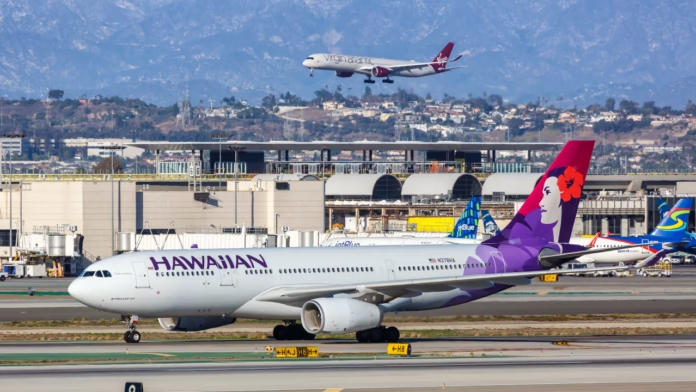Hawaiian Airlines announced on June 26 that a cybersecurity breach impacted some of its internal systems. The airline said it had taken swift action to protect its operations and that no flights were delayed or canceled as a result of the incident reuters.com. Passengers were assured that safety remained the top priority and that the breach did not affect any in‑flight systems or airport procedures.
Immediate Response and Passenger Assurance
Within hours of discovering the breach, Hawaiian Airlines engaged cybersecurity experts and federal authorities to investigate and contain the incident. The airline issued a statement saying all flights were operating on schedule and that guest travel was not impacted newsroom.hawaiianairlines.com. It stressed that enhanced monitoring and protective measures had been put in place across booking, baggage handling, and flight coordination systems.
The Federal Aviation Administration (FAA) confirmed it was monitoring the situation and reported no safety concerns. An FAA spokesperson said the agency was in close contact with Hawaiian Airlines to ensure that operational security standards were met throughout the response reuters.com.
Nature of the Breach and Industry Context
Hawaiian Airlines did not disclose which systems were specifically targeted or whether customer data was exposed. However, the language used in its public notices suggested the possibility of a ransomware attack, where digital extortionists immobilize key networks until a ransom is paid reuters.com.
This incident follows a similar cyberattack on WestJet just days earlier, which also disrupted internal systems without affecting flight operations ctvnews.ca. Security firms say both breaches bear hallmarks of the Scattered Spider group, known for tricking help‑desk staff into granting network access businessinsider.com. The back‑to‑back nature of these events highlights how vulnerable the aviation sector has become as it relies more on interconnected digital networks.
Collaboration with Experts and Next Steps
Hawaiian Airlines has pledged to keep the public updated as the investigation unfolds. The carrier is working with its parent company, Alaska Air Group, to review and strengthen cybersecurity protocols across all divisions. These measures include real‑time threat detection tools, advanced encryption, and staff training on social engineering threats investopedia.com.
The airline also said it would conduct a full post‑incident review to identify any gaps in its defenses and prevent future attacks. It invited scrutiny from regulators and third‑party auditors to ensure the fixes meet or exceed industry best practices.
Wider Implications for the Aviation Industry
Cybersecurity experts warn that airlines are attractive targets for criminals because their systems handle customer data, flight plans, and ground‑handling logistics. A single breach can ripple across partners, suppliers, and airports, putting reputations and operations at risk businessinsider.com.
As carriers roll out new technologies—like biometric screening and automated kiosks—the attack surface grows. The recent incidents underscore the need for the industry to treat cybersecurity as a core safety issue, on par with mechanical inspections and pilot training.
Analysis and Personal Insights
I see this breach as a clear signal that airlines must rethink how they defend their digital assets. It is not enough to react once an attack happens. Instead, carriers should build resilience by running regular drills, sharing threat intelligence, and investing in systems that spot anomalies before they escalate.
And while Hawaiian Airlines handled this event well by keeping flights on time and communicating openly, passengers expect more than just words. They want proof that their data is safe. Moving forward, I believe airlines that publish summary reports of incident reviews and invite independent audits will earn the most trust.
Ultimately, the aviation sector’s safety record long rested on metal, wings, and weather radar. Now it must expand to include firewalls and intrusion detection. If the industry meets this challenge, travelers can continue to enjoy smooth journeys, online and in the sky.

